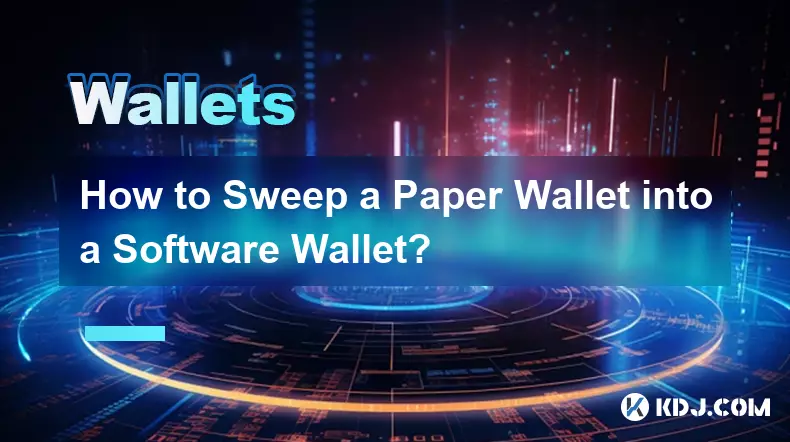-
 bitcoin
bitcoin $95122.959084 USD
-0.06% -
 ethereum
ethereum $3142.532402 USD
-0.28% -
 tether
tether $0.999439 USD
0.01% -
 xrp
xrp $2.209207 USD
-2.80% -
 bnb
bnb $925.395975 USD
0.07% -
 solana
solana $138.662599 USD
-1.73% -
 usd-coin
usd-coin $0.999753 USD
-0.02% -
 tron
tron $0.294100 USD
0.03% -
 dogecoin
dogecoin $0.161321 USD
0.35% -
 cardano
cardano $0.498672 USD
-1.53% -
 hyperliquid
hyperliquid $38.406659 USD
1.34% -
 zcash
zcash $679.663571 USD
5.44% -
 bitcoin-cash
bitcoin-cash $501.381807 USD
3.53% -
 chainlink
chainlink $13.975571 USD
-0.64% -
 unus-sed-leo
unus-sed-leo $9.166130 USD
-0.37%
The Beginner's Guide to Crypto Wallet Security Fundamentals
Your crypto is only as secure as your private keys—protect them like the crown jewels, because once lost or exposed, your funds are gone forever.
Nov 04, 2025 at 09:50 pm

Understanding the Core Principles of Crypto Wallet Protection
1. A crypto wallet does not store actual coins but instead holds private keys that grant access to blockchain addresses where digital assets reside. Securing these private keys is the foundation of wallet safety. Losing control of your private key means losing access to your funds permanently, as there is no central authority to recover them.
2. There are two primary types of wallets: hot and cold. Hot wallets are connected to the internet, such as mobile or web-based wallets, making them convenient for frequent transactions but more vulnerable to hacking attempts. Cold wallets, like hardware or paper wallets, remain offline and offer a higher degree of security against remote attacks.
3. Users must understand that decentralization removes intermediaries, which also eliminates customer support options in case of loss. This autonomy demands personal responsibility. Every action taken with a wallet—sending, receiving, backing up—must be approached with caution and awareness.
4. Seed phrases, typically composed of 12 to 24 words, are generated during wallet setup and serve as a master backup. They can restore access to all private keys associated with a wallet. Exposing a seed phrase to anyone or storing it digitally in an unsecured location risks irreversible theft.
Best Practices for Securing Your Digital Assets
1. Always use hardware wallets when holding significant amounts of cryptocurrency. These devices store private keys on secure chips and require physical confirmation for transactions, shielding them from malware and phishing schemes.
2. Enable multi-factor authentication (MFA) on any platform linked to your wallet, especially exchange accounts or cloud services used for backups. MFA adds a layer of identity verification beyond passwords, reducing the likelihood of unauthorized access.
3. Avoid entering your seed phrase into any device connected to the internet. Never take screenshots, email, or save them in text files. Instead, write them down on durable material and store them in multiple secure physical locations away from moisture, fire, and prying eyes.
4. Regularly update firmware and software for both wallets and associated devices. Developers frequently patch vulnerabilities that could be exploited by attackers attempting to intercept data or manipulate transaction details.
Recognizing and Avoiding Common Threats
1. Phishing remains one of the most prevalent tactics used to steal wallet credentials. Fake websites mimicking legitimate platforms trick users into entering their seed phrases or private keys. Always verify URLs and avoid clicking links sent via unsolicited messages.
2. Malware designed to scan clipboard contents can alter cryptocurrency addresses during copy-paste operations. This means even if you paste what you believe is the correct address, the malware may replace it with the attacker’s. Double-check every character before confirming a transfer.
3. Social engineering attacks often involve impersonation of trusted figures or support agents. Scammers may contact victims through social media, forums, or email, urging immediate action under false pretenses. Legitimate organizations will never ask for your seed phrase.
4. Public Wi-Fi networks pose serious risks when accessing wallets. Unencrypted connections allow eavesdroppers to intercept sensitive information. Use a virtual private network (VPN) or rely only on secure, private networks when managing digital assets.
Frequently Asked Questions
What should I do if I accidentally shared my seed phrase?Immediately transfer all funds to a new wallet created on a clean, secure device. Do not reuse any part of the compromised wallet. Assume full exposure and act swiftly to prevent asset loss.
Can someone hack my hardware wallet while I'm using it?Hacking a hardware wallet during normal use is extremely difficult due to built-in security protocols. However, purchasing tampered or counterfeit devices poses a risk. Always buy directly from the manufacturer and verify packaging integrity.
Is it safe to store my seed phrase in a bank vault?Storing a written seed phrase in a secure physical location like a bank vault can be effective, provided access is tightly controlled. Ensure the container is fireproof and waterproof, and consider splitting the phrase into parts stored separately to reduce single-point failure risks.
Do I need different wallets for different cryptocurrencies?Many modern wallets support multiple blockchains and tokens through a single interface using the same seed phrase. Verify compatibility before transferring assets, as sending the wrong token to an unsupported chain can result in permanent loss.
Disclaimer:info@kdj.com
The information provided is not trading advice. kdj.com does not assume any responsibility for any investments made based on the information provided in this article. Cryptocurrencies are highly volatile and it is highly recommended that you invest with caution after thorough research!
If you believe that the content used on this website infringes your copyright, please contact us immediately (info@kdj.com) and we will delete it promptly.
- Bitcoin, Downgrades, and Wall Street: A Wild Ride
- 2025-11-16 16:45:01
- Crypto ETFs: Index Tracking and Market Access for the Savvy Investor
- 2025-11-16 10:05:01
- Wormable npm Packages and Token Stealers: A Deep Dive into Supply Chain Security
- 2025-11-16 10:00:01
- Penny Discontinuation: What It Means for Coin Values and Numismatists
- 2025-11-16 09:55:01
- Penny Discontinuation: Coin Values and the Numismatist's Take
- 2025-11-16 09:50:01
- Crypto's Wild Ride: APEING, BCH, and the Quest for 100x Gains
- 2025-11-16 09:45:02
Related knowledge

How to Use a Testnet Wallet for Development and Testing?
Nov 14,2025 at 06:20pm
Understanding Testnet Wallets in Blockchain Development1. A testnet wallet functions similarly to a mainnet wallet but operates on a blockchain networ...

How to Create a Watch-Only Wallet for Monitoring Funds?
Nov 15,2025 at 02:39am
Understanding Watch-Only Wallets in the Crypto Ecosystem1. A watch-only wallet is a type of cryptocurrency wallet that allows users to monitor blockch...

How to Sweep a Paper Wallet into a Software Wallet?
Nov 14,2025 at 10:59pm
Understanding Paper Wallets and Software Wallets1. A paper wallet is a physical document that contains a cryptocurrency public address and a private k...

Can a Crypto Wallet Be Traced? An Explanation.
Nov 16,2025 at 08:19am
Understanding the Traceability of Cryptocurrency Wallets1. Cryptocurrency transactions operate on decentralized blockchain networks, where every trans...

How to Export Your Wallet's Transaction History?
Nov 16,2025 at 11:00am
Understanding Wallet Transaction Exports1. Every cryptocurrency wallet maintains a record of transactions linked to its addresses. This includes incom...

What Is a Multi-Signature Wallet and How Does It Work?
Nov 16,2025 at 03:59am
What Is a Multi-Signature Wallet?1. A multi-signature wallet, often referred to as multisig, is a type of cryptocurrency wallet that requires more tha...

How to Use a Testnet Wallet for Development and Testing?
Nov 14,2025 at 06:20pm
Understanding Testnet Wallets in Blockchain Development1. A testnet wallet functions similarly to a mainnet wallet but operates on a blockchain networ...

How to Create a Watch-Only Wallet for Monitoring Funds?
Nov 15,2025 at 02:39am
Understanding Watch-Only Wallets in the Crypto Ecosystem1. A watch-only wallet is a type of cryptocurrency wallet that allows users to monitor blockch...

How to Sweep a Paper Wallet into a Software Wallet?
Nov 14,2025 at 10:59pm
Understanding Paper Wallets and Software Wallets1. A paper wallet is a physical document that contains a cryptocurrency public address and a private k...

Can a Crypto Wallet Be Traced? An Explanation.
Nov 16,2025 at 08:19am
Understanding the Traceability of Cryptocurrency Wallets1. Cryptocurrency transactions operate on decentralized blockchain networks, where every trans...

How to Export Your Wallet's Transaction History?
Nov 16,2025 at 11:00am
Understanding Wallet Transaction Exports1. Every cryptocurrency wallet maintains a record of transactions linked to its addresses. This includes incom...

What Is a Multi-Signature Wallet and How Does It Work?
Nov 16,2025 at 03:59am
What Is a Multi-Signature Wallet?1. A multi-signature wallet, often referred to as multisig, is a type of cryptocurrency wallet that requires more tha...
See all articles










































































